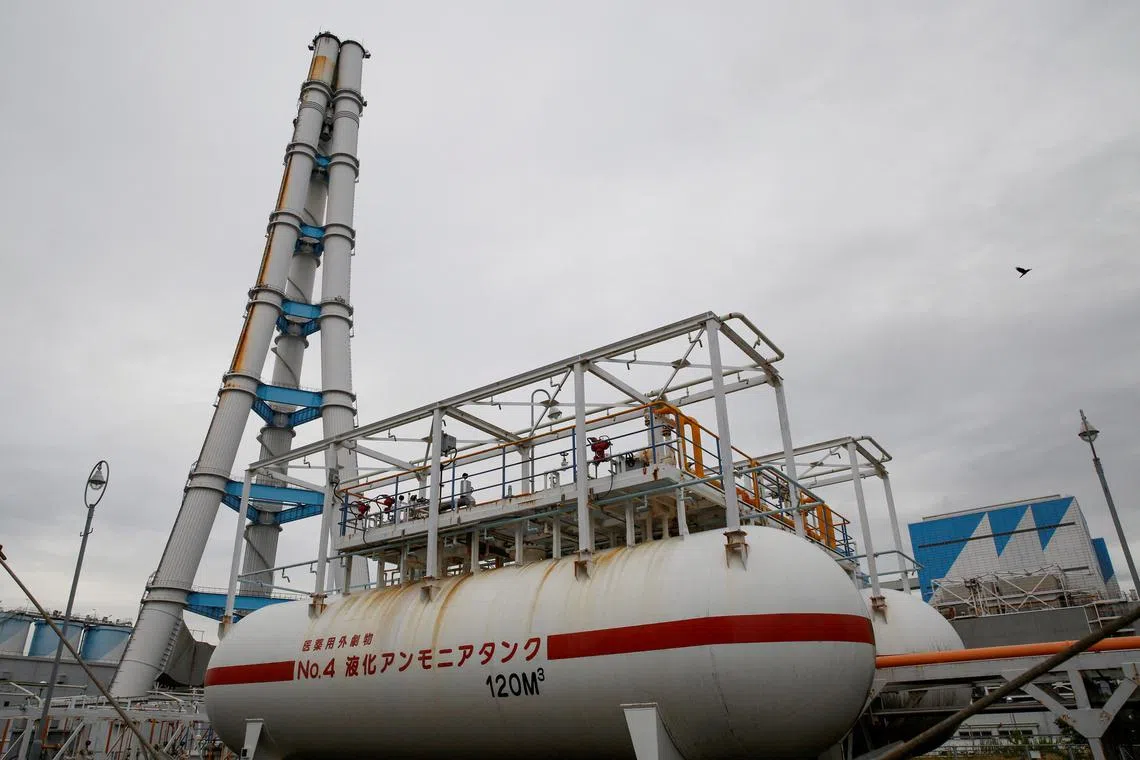Asia’s co-firing ambitions in power generation may produce more emissions
Sign up now: Get ST's newsletters delivered to your inbox

This regional push to achieve large-scale co-combustion in fossil power plants threatens to drive vast ammonia and hydrogen production.
PHOTO: REUTERS
Follow topic:
OAKLAND, California – Using ammonia and hydrogen alongside fossil fuels in power plants may result in more emissions than simply burning coal or gas, a new study has found, adding to scepticism over a decarbonisation technology being embraced by some Asian nations.
Countries including Japan and South Korea are betting on co-firing technology to achieve reductions in carbon emissions from electricity generation in the next decade.
But the plans have drawn criticism for being costly and inefficient, while the process could increase air pollution.
“This regional push to achieve large-scale co-combustion in fossil power plants threatens to drive vast ammonia and hydrogen production in exchange for minimal climate benefits at best,” Dr Seaver Wang, co-director of the climate and energy team at the Breakthrough Institute, an Oakland, California-based research group, said in a report released on Thursday.
Among recent projects, Japanese trading house Mitsui & Co in June concluded a sales agreement to supply ammonia in large-scale co-firing
Meanwhile, South Korea is aiming to use hydrogen and ammonia in its existing coal power plants, with the two fuels making up more than 7 per cent of the power mix in 2036.
Southeast Asian countries including Indonesia have also signed agreements to research domestic co-firing potential.
Proposals to co-fire ammonia or hydrogen in power plants to replace 20 per cent to 30 per cent of coal or gas burned still leave 80 per cent to 70 per cent of fossil fuel emissions, the Breakthrough Institute said.
The benefits shrink even further after considering the energy required to manufacture and transport ammonia and hydrogen.
Further, significant electricity is needed for the compression and liquefaction of hydrogen for transoceanic shipping, and 10 per cent to 20 per cent of the hydrogen cargo may be lost during a long voyage.
If suppliers produce the ammonia and hydrogen using fossil fuels, co-combustion can result in “considerably more carbon emissions than if the power plants were to burn only pure coal or natural gas”, the report said.
Projects supplying hydrogen markets in Asia-Pacific use fossil fuel feedstocks to produce hydrogen and subsequently synthesize ammonia. But currently operating and announced pilot projects in the region have made only vague, non-binding commitments to install carbon capture equipment, the report said.
Even with best-case, low-carbon hydrogen and ammonia production, co-firing yields little climate benefits and represents “a wasteful use of valuable low-carbon hydrogen and ammonia”, it said. BLOOMBERG

